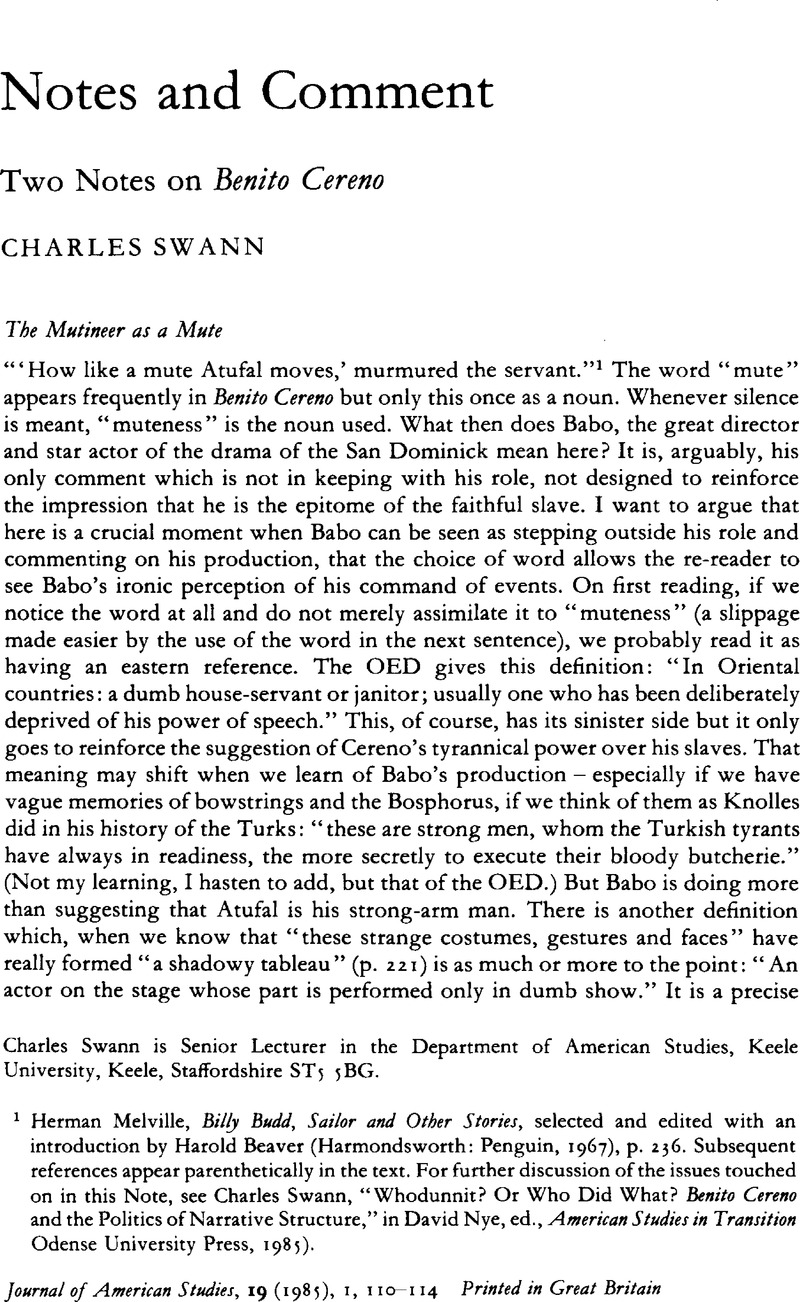No CrossRef data available.
Article contents
Two Notes on Benito Cereno
Published online by Cambridge University Press: 16 January 2009
Abstract

- Type
- Notes and Comment
- Information
- Copyright
- Copyright © Cambridge University Press 1985
References
1 Melville, Herman, Billy Budd, Sailor and Other Stories, selected and edited with an introduction by Beaver, Harold (Harmondsworth: Penguin, 1967), p. 236Google Scholar. Subsequent references appear parenthetically in the text. For further discussion of the issues touched on in this Note, see Swann, Charles, “Whodunnit? Or Who Did What? Benito Cereno and the Politics of Narrative Structure,” in Nye, David, ed., American Studies in Transition Odense University Press, 1985Google Scholar).
2 Rodman, Selden, Quisqueya: A History of the Dominican Republic (Seattle: University of Washington Press, 1964), p. 17Google Scholar.
3 Franklin, H. Bruce, The Wake of the Gods: Melville's Mythology, (Stanford, California: Stanford University Press, 1963), p. 137Google Scholar.
4 Bell, Michael Davitt, The Development of American Romance: The Sacrifice of Relation (Chicago and London: University of Chicago Press, 1980), p. 201Google Scholar.
5 See James, C. L. R., The Black Jacobins: Toussaint L'Ouverture and the San Domingo Revolution (New York: Vintage Books, 1963)Google Scholar and Genovese, Eugene D., From Rebellion to Revolution: Afro-American Slave Revolts in the Making of The New World (New York: Vintage Books, 1981), passimGoogle Scholar.
6 Taylor, William R., Cavalier and Yankee: The Old South and American National Character (New York: George Braziller, 1961), p. 64Google Scholar. Genovese (p. 96) gives rather more of the quotation — and a slightly different version: “Let it never be forgotten that our Negroes are freely the Jacobins of the country; that they are the Anarchists and the Domestic Enemy: the common enemy of civilized society, and the barbarians who would if they could, become the destroyers of our race.” I have not been able to consult the original — but “freely” is surely Genovese's Marxian slip.


